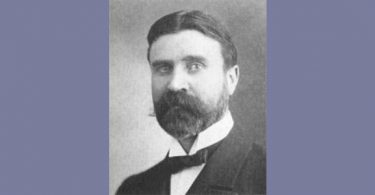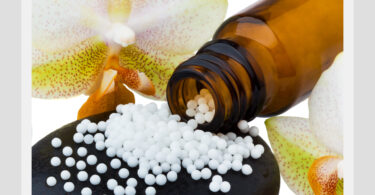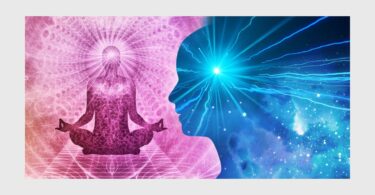Excerpted from: Absolute Homeopathic Materia medica by Dr. P I Tarkas and Dr. Ajit Kulkarni
Sulphate of Potassium
Kali-s.
REGION
Epithelium: respiratory, skin
Mucous membranes
Glands
Genito-urinary organs
Solar plexus
WORSE
Warmth; air; room
Evening (Puls.)
Noise
Lying (mind). Rest
Suppressed: eruptions, gonorrhea, syphilis
Emotions
BETTER
Air; cool; open
Motion. Walking
Fasting
Deflation
MONOGRAM
| CHLOROTIC. CATARRHAL. PHTHISICAL. DEGENERANT. RHEUMATIC. SYCOTIC. SKINY. DESQUAMATING. |
Highlights:
- Fat, fair and forty. Chlorotic.
- Torpid processes. Sluggishness of body and lack of physical irritability; (but not of mind) lack of reaction; well-selected remedies fall short in action.
- Pains: Sharp. Cutting. Piercing (Arg-n.). Stitching (ears). Tearing. Festering. Burning (). Shifting (Puls.). Rheumatic (Kalm.). Neuralgic. Deep seated. Maddening. Painful warts (Nit-ac.).
- Catarrhal discharges: Profuse; earlier thin yellow, watery, later thick, ripened, deep yellow or greenish pus; slimy, serous or degenerated secretion; brownish (ears). Intermittent; fetid; occasionally bloody. Third stage of inflammation. With soreness. Effusions. Favors resorption.
- Desquamation: Tendency to; after scarlatina, measles, erysipelas; epidermis.
- Growths: Warts. Polypoid excrescences, soft. Epithelioma (Acet-ac., ). Cancers (with Ferr-p.).
- Degeneration: Fatty; glands; liver; heart.
- Pre-disposition to phthisis. It is a good substitute for Sulph. in TB (like Sul-i.). Lupus.
- Dropsy after scarlatina. Pulsation all over the body. Surging of blood in the body.
- Trembling; quivering. Epilepsy; chorea.
- Joints: Fungoid inflammation, white swelling. Migratory rheumatism.
Causation:
- Ill effects of chill when overheated. Injuries. Suppressed eruptions, gonorrhea, syphilis.
Biochemically:
- It is the function remedy of the epidermis and of the epithelium present in the epithelial cells of skin and mucosae. Kali-s. which is in reciprocal action with iron, affects the transfer of inhaled oxygen to all the cells containing iron.
It affects the access of oxygen and so facilitates the formation of new epithelium. When a sulphate and any oxide of iron come into contact with decomposing organic substances, they surrender their oxygen and form sulphuric acid and iron oxide.
In other words, it helps to convey oxygen to the cell structure and thus has a boosting influence on metabolism. Its deficiency causes are due probably to retrograde metamorphosis (fatty degeneration of inflammatory products and of effete epithelium etc.) resulting in yellow, slimy discharges and epidermal or epithelial desquamation.
Schuessler’s biochemic Puls.
Mind:
- Tense in temperament (like Nux-v.) but sluggish and inactive (like Puls.). Easily angered (like Sulph.); very irritable and quarrelsome. Hurried. Impatient (Arg-n.). Excitable. Oversensitive; to noise. Easily frightened; startling from fright; fear of falling. Timidity.
- Anxiety in stomach, chest, heart; in open air; from warmth; while walking on waking, evening-night in bed. Hysterical symptoms. Emotions cause faintness/goneness in pit of stomach. Amiable, friendly. Seems to be thinking of something far away.
- Desires and rejects the things. Desire to lie down, but lying aggravates, so one must walk for relief. Lack of confidence. Conservative (like Kali-c.). Aversion to work, business and company. Irresolute. Mental exertion aggravates.
- Mental type is a blend of Arg-n., Nux-v., Puls. and Sulph.
PARTICULARS
Head:
- Vertigo: < rising or looking up, > lying. Every moment in fear of falling or dare not leave the room. Staggers while walking.
- Headache: Various. Catarrhal. Gastric. Rheumatic, < in warm room, in evening, motion; > walking in open air (). Dull, befogged feeling in head, feeling to lose her senses. Great pain on moving head from side to side or backwards, can move it forwards without pain.
- Hot (fore-) head, cold vertex.
- Scalp: yellow, scaly dandruff, moist, sticky. Scald head. Psoriasis. Crusta lactea. Falling of hair. Bald spots, also beard (after gonorrhea).
Eyes:
- Troubles after eyestrain, burning, photophobia. Conjunctivitis; yellowish or greenish, watery or purulent mucus from the eyes, yellow crusts on the eyelids; ophthalmia neonatorum ().
- Cornea: Abscess; ulceration; spots.
- Cataract, opacity of the crystalline lens.
- Hypopion ().
Ears:
- Otitis media; discharge thin bright, yellow, greenish, brown, or white purulent, offensive, < evening (), stinking.
- Pain into the ear, sharp, cutting, stitches, piercing below the mastoid process.
- Deafness from congestion of the tympanic cavity or with catarrh and swelling of the eustachian tube. Polypoid excrescence closes the meatus near the opening, causing deafness.
- Noises; ringing; roaring; rushing in.
Nose:
- Tendency to take cold; when once heated cannot cool off without taking cold.
- Yellow, slimy (or stringy) discharge; thick alternating with watery; lumpy in ozaena. Loss of smell and taste.
- Nose obstructed; discharge from PN. Epistaxis.
- Engorgement of the naso-pharyngeal mucous membrane; mouth breathing, snoring, wheezing, etc., remaining after removal of adenoids.
Face:
- Greasy. Chlorotic. Sickly. Epithelioma on right cheek, extending from lower eyelid to alae nasi; size of silver dollar; eye sympathetically affected either through extension of disease process or through irritating discharge; ulcerative stage, indurated base, wall-like hard elevated edges.
- Blisters on lips and inside mouth. Warts on lip. Lower lip swollen; desquamation; dry.
Mouth:
- Tongue: Coated yellow and slimy, with dyspepsia, in malaria; sometimes with whitish edge; at base. Warts. Taste insipid, pappy, lost.
- Aphthae.
- Gums: Bleeding; chronic painfulness; white.
- Toothache: Worse warm room towards evening; better in cool open air.
Throat:
- Hoarseness croupy (, Spong.) from cold air, overexertion (i.e. heat). Constriction. Dryness.
- Tonsils swollen. Adenoids; mouth breathing; snoring after excision. Pharyngitis. Mucus; easily hawked up; < morning.
Stomach:
- Desires: Sour, sweets, cold drinks, milk, and cold things.
- Averse to: Bread, eggs, meat, warm food or drink.
- Nausea after cold drink; during headache. Solar plexus, obstructed flatulence. Sensation as of a load at the pit of stomach, with yellow mucus coating on tongue.
- Gastralgia after chilling. Chronic catarrh of the stomach and duodenum. Repeated vomiting of a whitish substance. Burning heat or coldness. Colicky pains.
Abdomen:
- Gastro-duodenal catarrh with jaundice. Colicky pains; abdomen feels cold to touch. Pain in abdomen just above the angle of the crest of the ilium; on a line towards the umbilicus, deep within beside the right hip.
- Obstructed flatulence. Tympanitic, tense abdomen. Typhlitis, to aid the absorption of any secretion and to lessen tendency to inflammatory condition in abdomen.
Rectum:
- Constipation; stool large like sheep’s dung, usually light-coloured and bilious, with hemorrhoids (), yellow tongue.
- Diarrhea: Yellow, slimy, after midnight, morning; chronic. Symptoms of cholera; black, thin, offensive stools in whooping cough.
Urinary:
- Pyelitis. Nephritis, with stitching pains; post-scarlatinal chronic catarrh of bladder.
Male:
- Gonorrhea; discharge slimy, yellowish-green or thick yellow (Nat-); old or advanced stage but no stricture. Coronitis and orchitis, after suppressed gonorrhea.
- Syphilis, with evening aggravation. Sexual desire lost.
Female:
- Menses: Too late, scanty and feeling of weight in abdomen. Metrorrhagia.
- Leucorrhoea: Yellow, greenish, slimy or watery.
- Prolapse. Builds women subject to abortion. Morning sickness of pregnancy.
Respiratory:
- One of the most useful remedies in catarrh of the chest.
- Tendency to take cold; when heated cannot cool off without taking cold. Every cold settles in the larynx; constant scraping sensation in larynx.
- Tendency to respiratory tract affections: Laryngitis, pharyngitis, bronchitis, bronchiolitis, asthma, pneumonia, whooping cough etc.; with yellow, slimy or watery, but easily expelled expectoration.
- Pneumonia with wheezing; dyspnea < warm room; yellow, loose rattling phlegm or watery mucus; stage of resolution; coarse rales; tongue coated yellow and slimy.
- Bronchial asthma; < warm season, warm room; with yellow expectoration. Suffocative feeling in hot atmosphere.
- Cough < evening, lying, hot atmosphere, > cold air and drinks; post-grippal; cough hard coarse like croup; mucus slips back and is generally swallowed, in children.
- Ratting of mucus in chest (Ant-t.); during sleep, esp. in children; with or without cough; premature mucous rales in chest (i.e. rales which appear before other symptoms). When a child has passed through broncho-pneumonia and seems to have recovered and after every change in weather to cold, the child coughs and rattles in the chest; no expectoration; passive rattling cold; without prostration.
Heart:
- Palpitation from effects of heat. Dropsy from heart disease. Anxiety in chest.
Back:
- Pains: Periodical, < evening, > open cool air.
Extremities:
- Shifting, wandering pains. Rheumatic pains in joints, < heat, evening; > cold weather or cold application, fungoid inflammation of joints; arthritic nodes. Hip-joint disease.
- Cold hands and feet (opp. ). Chronic restless legs.
- Nails diseased; growth interrupted. (Ant-c.).
Sleep:
- Dreams: Terrifying; ghosts, death, robbers, murder, and violent struggling in their sleep.
Skin:
- Tendency to desquamation; abundant after measles etc.; hands; legs; yellow scales. Psoriasis. Vesico-pustular and papular eruptions. Yellowish pustules and marked soreness. Nettle rash. Seborrhea. Favus. Polyps. Scabs. Tubercles.
- Eczema: Burning, itching, papular eruptions; > open air; yellow greenish watery discharge; suppressed. Ringworm of scalp or board with abundant scales ().
- Skin harsh and dry from suppression of eruptions or exanthema. Tuberculous ulcers with a continuous oozing of yellow pus and lymph. Various veins.
- Erysipelas, blistering variety, to facilitate the falling off of scales. Boils after rheumatism.
- Epithelial cancer with discharge of thin yellow serous matter.
Thermic:
- Chill in evening (mingled with heat), then fever, no sweat.
- Temperature rises in the evening until midnight and then falls again (near morning).
- Chronic intermittent fever with yellow, slimy coated tongue. Fever from blood poisoning; gastric; enteric; typhoid. Scarlet fever, stage of desquamation, cold sweat, thirstless. Hectic.
- Profuse, easy sweat < night ().
Relations:
- Similar: Acet-ac., Ant-t., Aur-m., Bry., Calc., Calc-s., Carls., Hydr., Iod., Kali-bi., Kali-m., Nat-m., Nat-p., , Sep., Sil., Staph., Sulph., Tub. (precedes well), X-ray.
- Compatible: , Hep., Kali-c.
- Complementary: Dulc.
- A blend of and Puls. A cross between Sulph. and Puls.
- Compare: (soft and gentle; but Puls. is more demanding, attention seeking and parasitic; Kali-s. more hot than Puls.; Kali-s. thirsty, Puls. thirstless; Kali-s. more obstinate and irritable than Puls.; Puls. more shy; Kali-s. may be tense in temperament but sluggish and inactive; Kali-s. deeper-acting than Puls. Hence when Puls. fails to relieve permanently follow up with Kali-s. if the patient remains hot; if the patient becomes chilly and is > rest, then follow with Sil.).
- (similar in dyspepsia; epithelioma; constipation; profuse sweat; ophthalmia; but Hydr. more sticky and ropy; ulcers in Kali-s. oozing yellow pus while in Hydr. atonic, senile and shallow; Hydr. more senile, tumorous and cancerous).
- Kali-s-chr. (very fine threads from the septum to external wall in the nasal passages; affection of nasal fossae and hay fever; chronic colds; sneezing, red, watery eyes, irritation of mucous membranes).
- Kali-bi. is more adherent and stickier than Kali-s.
- Acutes: , Kali-c., Kalm., Puls., Rhus-t.
- Antidote to: Rhus poisoning.






